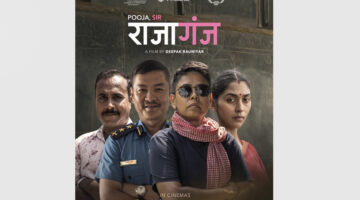-Deepa Adhikari
“Achieving gender equality requires the engagement of women and men, girls and boys. It is everyone’s responsibility.”
-Baan Ki Moon, Former Secretary-General of the United Nations
As a Monitoring and Evaluation Officer, I recently visited 15 media houses and met with editors of nine national dailies and six major online news portals. During the visit, I learnt that media houses were gradually embracing the practice of gender inclusive- female-friendly newsroom though most of the media outlets are occupied largely by the male journalists.
The editors believed in gender inclusive newsroom and were trying to incorporate more number of female journalists. As they shared, female sources and gender stereotype subjects are regularly discussed during the in-house meeting.
Editor-in-Chief of the Kathmandu Post daily, Anup Khaphle, in conversation with FF said, ”Since my appointment, KTP has already recruited seven female journalists. I am still in search to increase female journalists.
Likewise, Annapurna Post recently promoted Ms Ramkala Khadka as an editor to a special edition of children focused content, ‘Annapurna Ankur.’
Similarly, almost 40% journalists are the female ones at Setopati.com, according to Editor-In-Chief, Amit Dhakal. Dhakal is planning the newsroom constituting 51% female journalists.
According to Freedom Forum annual report 2018, Setopati published 41 stories under female byline. It is the highest number of female byline among other media outlets. Also, it has incorporated 54 female news sources outnumbering others. Interesting it is: Setopati has a logo on the top of the website where female replica is larger than male replica, which Mr Dhakal said his media’s logo was symbolically advocating for women empowerment.
The Kantipur daily also said it was making tremendous efforts to increase number of female journalists. Editor-In-Chief, Mr Narayan Wagle stressed, “Kantipur is planning to appoint at least one female journalist in every bureau.”
It was good to learn that Kantipur daily has already adopted a policy to publish at least one female-authored opinion article on it, which also reflected in FF report. According to FF annual data of OP-ED authors, Kantipur succeed to include 43 female authors which is highest among other media outlets in 2018.
Likewise, the Himalyan Times (THT) has promoted 4 female journalists in the leading role- Online Head: Richa Thapa, Business Bureau Head: Prasanna Chitrakar, Feature Head: Adona Lee and Sharada Adhikari. It is another good news indeed.
In case of state owned media, The Rising Nepal and Gorkhapatra dailies both have recently recruited more number of female journalists aiming to make gender inclusive newsroom. In total, 5 female journalists are working currently at The Rising Nepal, where there was only one female journalist some time back. Compared to the past, the number of female bylines has sharply increased in the recent days. Likewise, Gorkhapatra daily is also following the steps to make gender inclusive newsroom.
Republica daily’s the WEEK edition is led by Ms Shila Khatry and she is accompanied by other female journalists Anviti Upadhyay, Urja Acharya and Rakhsya Khadka. It is of course appreciative that female team solely handles one day’s edition of the daily.
Some editors admitted that newsroom in Nepal are dominated by male mindset. According to them, it may also be one of the reasons the female journalists to discontinue this profession.
After this visit in media outlets, Freedom Forum concludes that media houses are gradually making headway to gender inclusive newsroom by increasing the number of female reporters, giving them favourable atmosphere. Also, editors of late are mulling how more number women could be attracted and retained in journalism.
——


